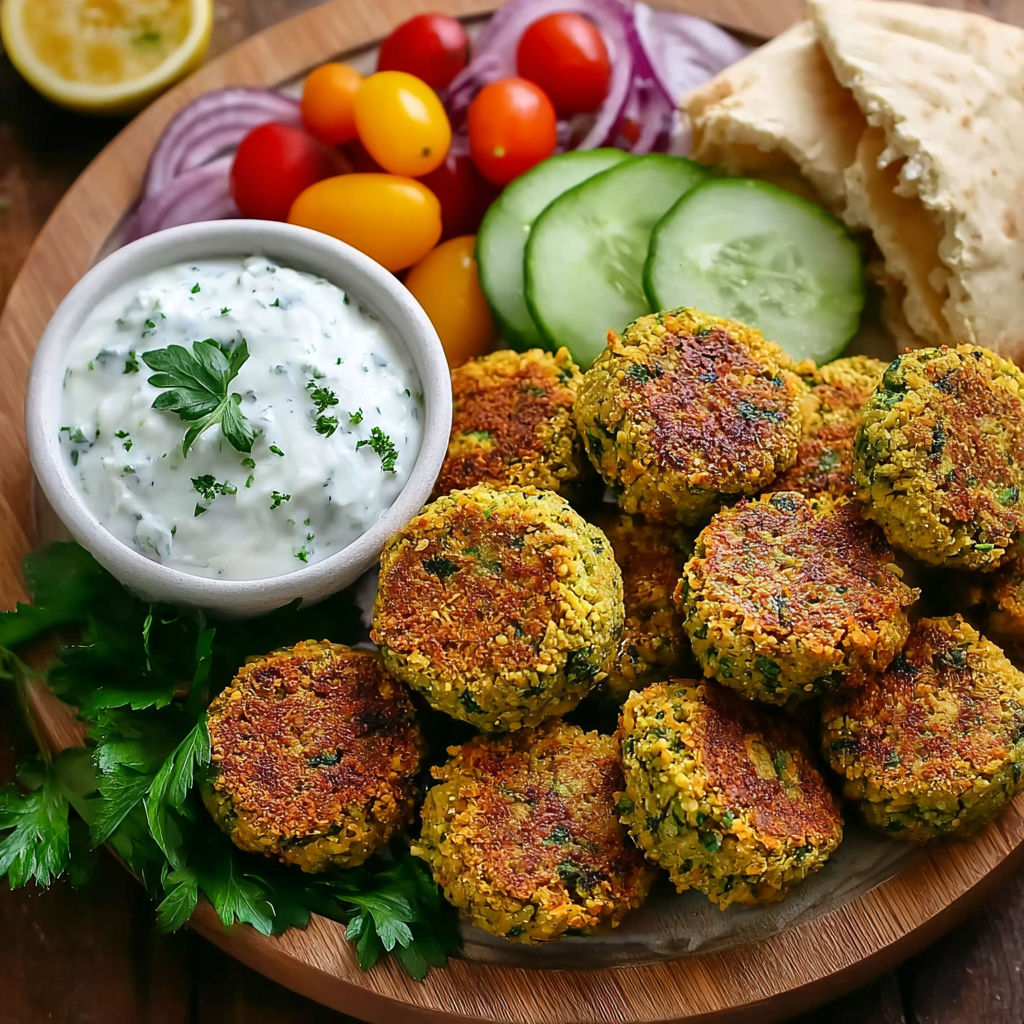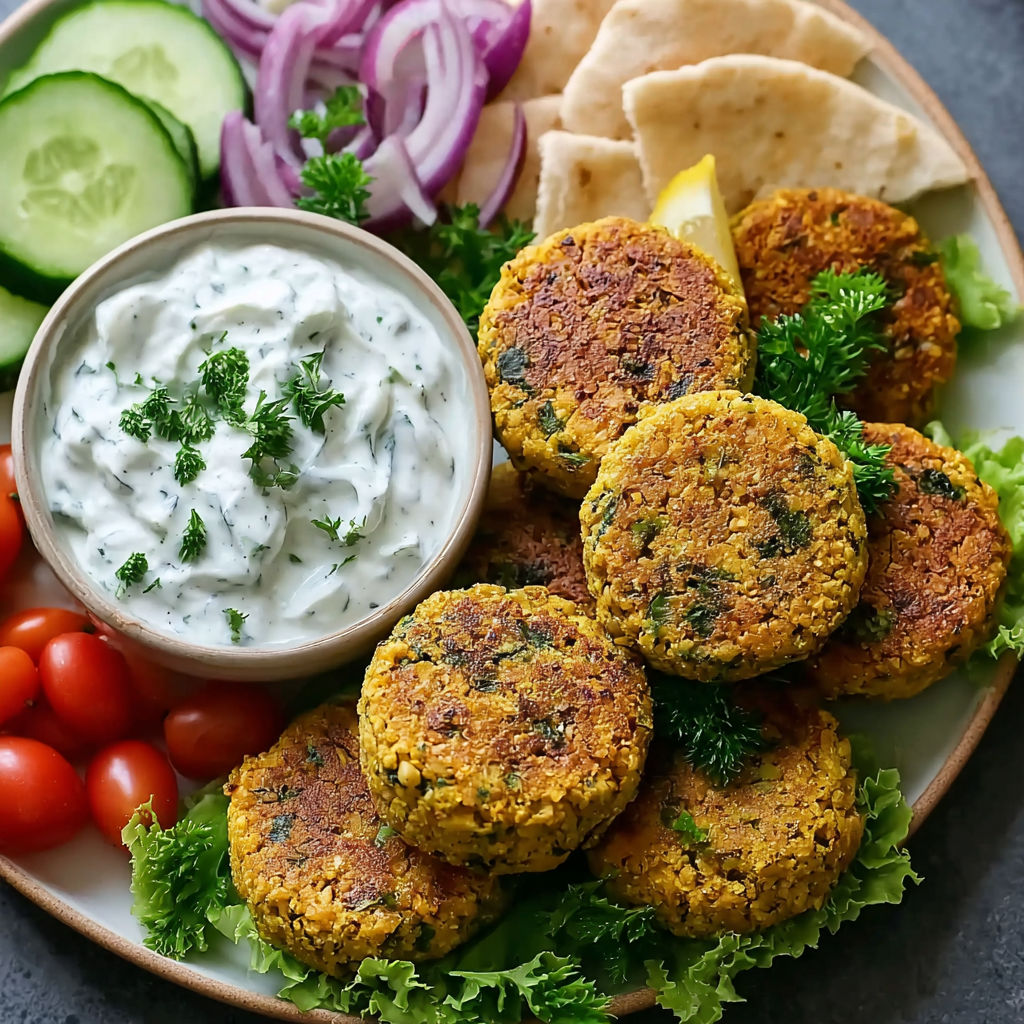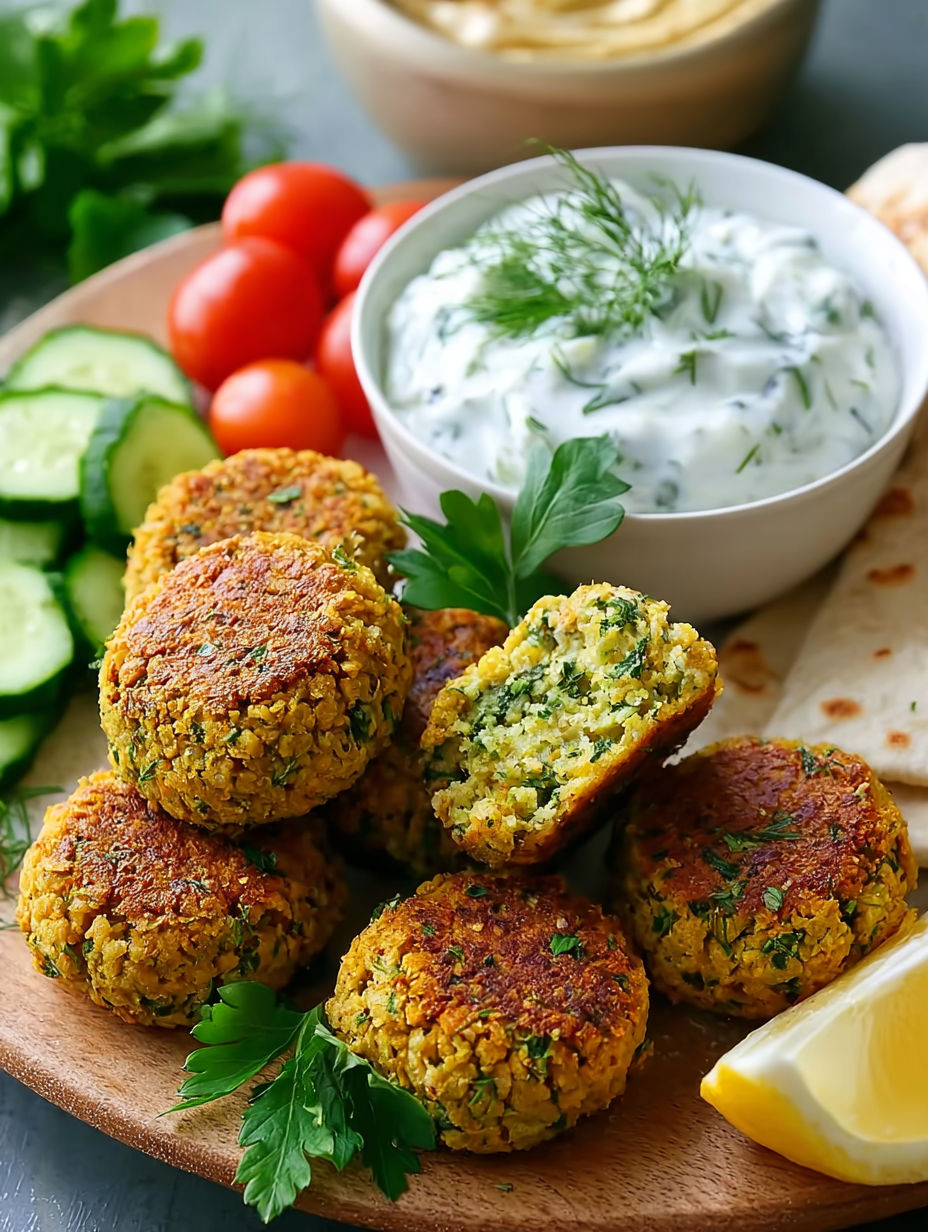 Pin
Pin
This baked falafel with tzatziki sauce revolutionizes the traditional deep-fried favorite into a healthier, equally delicious version that pairs perfectly with cool, creamy tzatziki. The oven-baked method delivers that signature crispy exterior while maintaining a tender, herb-infused interior without the excess oil.
I first created this recipe when trying to satisfy my Mediterranean food cravings without leaving home. After experimenting with baking instead of frying, my family now requests these falafels weekly as part of our Mediterranean feast nights.
Ingredients
- Chickpeas provides the protein base and authentic texture look for canned varieties that are firm but not mushy
- Fresh parsley and cilantro deliver the signature bright green color and herbaceous flavor use the stems too for maximum flavor
- Garlic and onion create the aromatic foundation choose fresh garlic over pre-minced for best results
- Cumin and coriander add the warm authentic Middle Eastern flavor profile toast them briefly for enhanced aroma
- Baking powder helps create a lighter texture in the oven baked version
- Tahini binds the mixture while adding nutty depth select a smooth variety without separation
- Greek yogurt forms the creamy tzatziki base choose full fat for richest flavor
- Cucumber adds refreshing crunch to the sauce English cucumbers work best for their lower water content
How To Make Baked Falafel with Tzatziki Sauce
- Prepare the mixture
- Add chickpeas, herbs, aromatics, and spices to your food processor. Pulse gently until combined but still textured. The mixture should hold together when pressed but maintain some visible herb pieces for authentic appearance and flavor bursts.
- Form the falafel
- Transfer mixture to a bowl and fold in tahini and olive oil by hand. This ensures even distribution without overprocessing. Scoop approximately two tablespoons of mixture and gently form into patties about half an inch thick. The flatter shape allows for more even baking and crispier edges.
- Bake to perfection
- Arrange patties on a parchment-lined baking sheet with at least an inch between each. Bake at 400°F for 25 minutes, carefully flipping halfway through. The exterior should develop a golden crust while the interior remains moist. Let rest for 5 minutes after baking to set completely.
- Create the tzatziki
- While falafels bake, combine yogurt with grated and squeezed cucumber. The squeezing step is crucial as excess moisture will make your sauce watery. Add minced garlic, lemon juice, and seasonings, then refrigerate to allow flavors to meld.
Fresh herbs are truly the secret to exceptional falafel. I once tried making this recipe with dried herbs during a snowstorm when fresh weren't available, and the difference was remarkable. The vibrant color and aroma that fresh parsley and cilantro bring cannot be replicated. My daughter actually helps me grow these herbs specifically for our falafel nights.
Make-Ahead Options
The falafel mixture can be prepared up to 24 hours in advance and kept refrigerated. This actually improves the flavor as the spices have time to meld. The formed patties can also be frozen uncooked on a baking sheet, then transferred to a freezer bag for up to 3 months. When ready to use, simply bake from frozen, adding about 5-7 minutes to the cooking time.
Serving Suggestions
Transform these falafels into a complete meal by creating a Mediterranean bowl with quinoa or couscous as the base. Add sliced cucumbers, cherry tomatoes, olives, and a drizzle of olive oil. For a traditional presentation, stuff them into warm pita pockets with tzatziki, shredded lettuce, and thinly sliced red onion. They also make wonderful appetizers served on a platter with tzatziki as a dipping sauce.

Cultural Context
Falafel has ancient origins in the Middle East, traditionally made with fava beans in Egypt and chickpeas in the Levant region. This baked version maintains the authentic flavors while adapting the cooking method. In Middle Eastern tradition, falafel is street food, often served wrapped in thin flatbread with vegetables and tahini. The addition of tzatziki represents a Greek influence, creating a delightful cultural fusion that highlights the shared culinary heritage of the Mediterranean region.

Recipe FAQs
- → Can I make the falafel mixture ahead of time?
Yes! The falafel mixture can be prepared up to 24 hours in advance and stored in an airtight container in the refrigerator. This actually allows the flavors to develop more fully. Form the patties just before baking for best results.
- → Are these falafel gluten-free?
The falafel themselves are gluten-free as they use chickpeas as a base. Just be sure any baking powder you use is certified gluten-free, and serve with gluten-free alternatives to pita bread if needed.
- → Can I use dried chickpeas instead of canned?
Yes, dried chickpeas can be used for a more traditional texture. Soak 1 cup of dried chickpeas overnight (they will expand), then drain well before processing. No need to cook them first—the soaking and baking will provide the right texture.
- → How do I store leftover falafel?
Store cooled falafel in an airtight container in the refrigerator for up to 3 days. Reheat in a 350°F oven for 10 minutes to restore crispness. The tzatziki sauce can be refrigerated separately for up to 2 days.
- → Can I freeze the falafel?
Yes, baked falafel freeze well for up to 3 months. Place cooled falafel on a baking sheet, freeze until solid, then transfer to a freezer bag. Reheat from frozen in a 375°F oven for 15-20 minutes until hot throughout.
- → What can I substitute for cilantro if I don't like it?
If you're not a fan of cilantro, simply double the amount of parsley or substitute with fresh mint or dill. These herbs will provide a different but equally delicious flavor profile.
